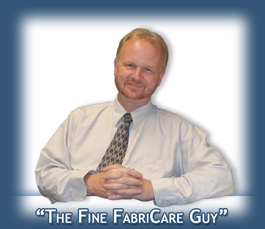I’m often asked:
“If I get the right training and have the right products and tools, will I still have to turn down any upholstery cleaning jobs?”
My answer is always . . . . YES, YOU ABSOLUTELY MUST!!
“You must turn down any job where your customer’s expectations exceed what you can deliver in the way of a result”
Think About This:
What really is the most costly event that can happen with a customer?
If you damage an individual piece of furniture through color bleeding, fading, or texture distortion, you will have a tangible cost that you will incur (a claim) and then it’s settled. But that’s not your biggest cost! The fact is that the damage claim is your smallest problem!
What happens if you consistently deliver poor results in the eyes of your customers?
You could have dozens of unhappy customers who will never call you back, and never refer you to others, or more likely will trash your reputation at the hair salon at every opportunity!
Unlike carpet, upholstery has so many variables in its fiber content and design, including consumer neglect, that it is impossible to always remove all stains and soils easily, or at least removing them without causing color or texture damage to the neglected fabric.
The problem is communication.
If your customer understands these limitations up front, they are more likely to accept a less than perfect result, or they have the option of declining your service. Either result is less costly than the alternative which usually happens to cleaners who spend hours attempting to clean something that will never be able to be restored. They lose both the money and at the same time have at minimum an unhappy customer, and more often than not lose the customer for good.
A good pre-inspection and prequalification step is NOT a list of good sounding excuses that is meant to talk the customer into accepting poor results.
On the contrary, if you understand the limitations of a specific fabric, such as the tendency of a rayon chenille to lose its texture from wear or denim to lose color, you can speak to the specific limitations imposed by the fabric and the use your customer has put it through when you explain what level of soil or stain removal that your customer might accept.
The ability to explain these limitations also should allow you to talk to your customer about the care of their furniture before it becomes heavily soiled and stained, and thus allow you to deliver results with which they will be pleased.
Learning to follow a consistent and well thought out pre-inspection and testing protocol on every job you clean will prevent this costly and frustrating problem, and will also enhance your image of professionalism in your customers eyes.
